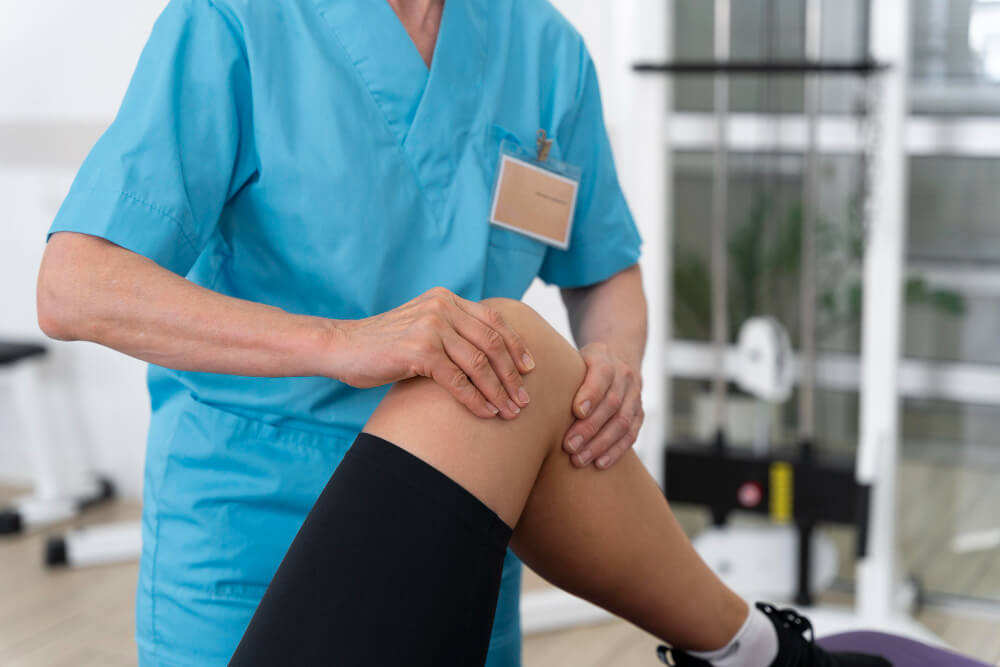Understanding Knee Pain: Exploring Arthroscopic Procedures and Treatment Options
Knee pain is a prevalent issue that affects people of all ages, from athletes to the elderly. It can stem from various causes, including injuries, arthritis, and underlying medical conditions. In this comprehensive guide, we will delve into the world of knee pain, exploring the significance of knee arthroscopy as a diagnostic and treatment tool. We will also discuss a range of treatment options available to individuals grappling with knee pain.

The Anatomy of the Knee Joint
The knee joint is a complex structure comprising bones, ligaments, tendons, and cartilage. Understanding the anatomy is crucial for comprehending the potential sources of knee pain. The knee joint involves the femur (thigh bone), tibia (shin bone), fibula (calf bone), and the patella (knee cap). Ligaments, such as the anterior cruciate ligament (ACL) and posterior cruciate ligament (PCL), provide stability, while cartilage acts as a cushion between the bones.
Common Causes of Knee Pain
Knee pain can result from a myriad of causes, ranging from acute injuries to chronic conditions. Common culprits include:
- Injuries: Sprains, strains, fractures, and dislocations can lead to immediate knee pain.
- Arthritis: Osteoarthritis, rheumatoid arthritis, and gout are inflammatory conditions that affect the knee joint, causing pain and stiffness.
- Overuse: Repetitive activities or excessive strain on the knee, common in athletes, can lead to overuse injuries.
- Tendonitis: Inflammation of the tendons surrounding the knee, such as patellar tendonitis, can cause pain and discomfort.
- Meniscus Tears: Tears in the meniscus, the cartilage that cushions the knee, are common and can result from sudden twisting or aging.
Understanding Knee Arthroscopy
Knee arthroscopy is a minimally invasive surgical procedure that allows orthopedic surgeons to visualize, diagnose, and treat various knee conditions. A small camera, called an arthroscope, is inserted through tiny incisions, providing a clear view of the interior of the knee joint. This procedure aids in identifying the root cause of knee pain and can be therapeutic as well.
Diagnostic Applications of Knee Arthroscopy
Knee arthroscopy serves as a valuable diagnostic tool for:
- Meniscus Tears: Arthroscopy enables the surgeon to identify and treat tears in the meniscus, a common cause of knee pain.
- Ligament Injuries: Tears or sprains in ligaments, including the ACL and PCL, can be diagnosed and addressed through arthroscopy.
- Cartilage Damage: Arthroscopy allows for the assessment and treatment of cartilage damage, helping to preserve joint health.
Therapeutic Interventions with Knee Arthroscopy
Beyond diagnosis, knee arthroscopy offers therapeutic benefits:
- Meniscus Repair: Tears in the meniscus can be repaired or trimmed during arthroscopy, promoting healing and reducing pain.
- Ligament Reconstruction: Arthroscopic techniques are often employed for ligament reconstruction, particularly for the ACL.
- Cartilage Restoration: Procedures like microfracture or cartilage grafting can be performed to address cartilage defects.
Non-Surgical Approaches

Many cases of knee pain can be managed without surgery:
- RICE Therapy: Rest, Ice, Compression, and Elevation are initial measures to reduce pain and swelling.
- Physical Therapy: Strengthening exercises and stretches can improve knee function and alleviate pain.
- Medications: Nonsteroidal anti-inflammatory drugs (NSAIDs) and pain relievers can offer temporary relief.
Surgical Interventions
For cases requiring surgical intervention, various options exist:
- Arthroscopic Procedures: As discussed earlier, arthroscopy is a minimally invasive approach for both diagnosis and treatment.
- Joint Replacement: In severe cases of arthritis, total or partial knee replacement may be considered.
- Ligament Reconstruction: Surgical reconstruction of damaged ligaments, especially the ACL, can restore stability.
Emerging Technologies and Innovations
Advancements in medical technology continue to shape the landscape of knee pain treatment:
- Regenerative Medicine: Platelet-rich plasma (PRP) and stem cell therapy show promise in promoting tissue healing.
- Robot-Assisted Surgery: Precision and accuracy in knee surgeries are enhanced through the use of robotic systems.
Conclusion
In conclusion, understanding the complexities of knee pain is crucial for effective diagnosis and treatment. Knee arthroscopy stands out as a valuable tool in the orthopedic arsenal, providing both diagnostic insights and therapeutic interventions. With a range of treatment options available, individuals suffering from knee pain can explore diverse avenues for relief and restoration of function.
